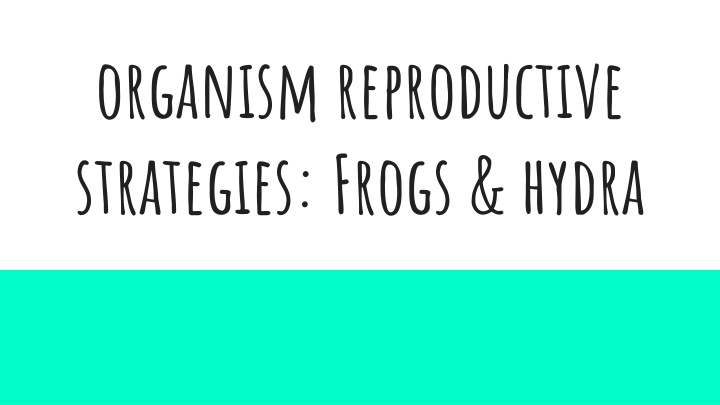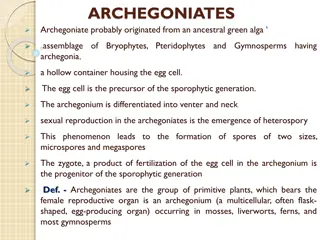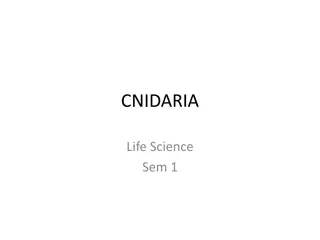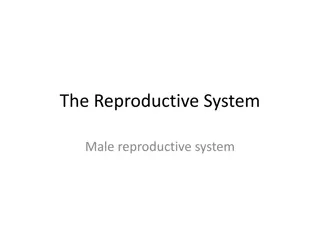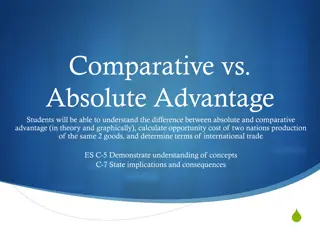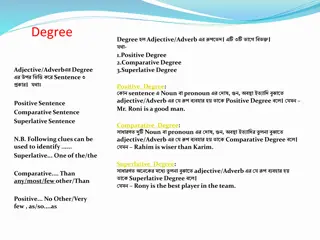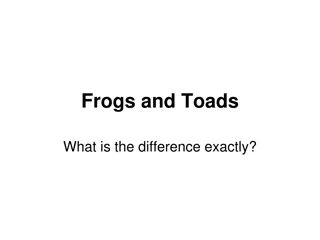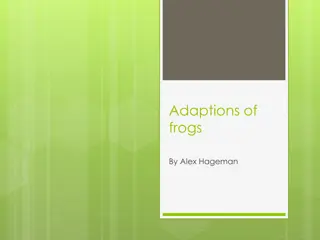Reproductive Strategies in Frogs and Hydra: A Comparative Analysis
Frogs and hydra exhibit unique reproductive strategies. Frogs rely on sexual reproduction, lay hundreds to thousands of eggs, and use calls to attract mates, while hydra employ both sexual and asexual reproduction, producing one offspring at a time or through budding. Each strategy presents advantages and disadvantages for these organisms.
Download Presentation

Please find below an Image/Link to download the presentation.
The content on the website is provided AS IS for your information and personal use only. It may not be sold, licensed, or shared on other websites without obtaining consent from the author.If you encounter any issues during the download, it is possible that the publisher has removed the file from their server.
You are allowed to download the files provided on this website for personal or commercial use, subject to the condition that they are used lawfully. All files are the property of their respective owners.
The content on the website is provided AS IS for your information and personal use only. It may not be sold, licensed, or shared on other websites without obtaining consent from the author.
E N D
Presentation Transcript
organism reproductive strategies: Frogs & hydra
Hydra leopard frogs Freshwater animals (belongs in the phylum Cnidaria) Amphibians (cold-blooded vertebrate with gills) Lifespan: Can live forever (depending on their living condition) Lifespan: 2-4 years Adults: 2-4 inches in length Breed once a year Adults: 1 inch in length Males are smaller than females Breed every two days on average Uses special call to attract mate
Reproductive category & description Frogs use sexual reproduction to reproduce. Some characteristics of their reproduction strategy include: Number of offspring produced per cycle: 300-6500 eggs Frequency of cycle: 1 year Age of sexual maturity: 3 yrs. old Length of gestation: None Males use a call to attract females Males clasp females from behind causing her to lay hundreds of eggs
Reproductive category & description cont. Hydra use both sexual and asexual reproduction to reproduce. Some characteristics of their reproduction strategies include: Number of offspring produced per cycle: 1 Frequency of cycle: Every two days Age of sexual maturity: 5-10 days Length of gestation: N/A Reproductive strategies: Asexual: Forms bud on the body wall that eventually evolve into one hydra that breaks off from parent. Sexual: Hydra produce both ovaries and testes. Eggs in the ovary are fertilized by sperm shed
Advantages & disadvantages Frog advantages: Hydra advantages: More eggs are laid at once --- -> increased chance of having offspring that survive Reproduces frequently Can reproduce in harsh weather through sexual reproduction Disadvantages: Disadvantages: Asexual reproduction sometimes depends on how well fed the hydra is Eggs are only laid once a year 95% of offspring don t make it
Hydra & frog comparison Similarities: Both use sexual reproduction and release eggs/zygote into water Both have no gestation length Differences: Hydras can reproduce asexually through a process called budding Frogs produce many offspring at one time Hydras only produce one offspring at a time
